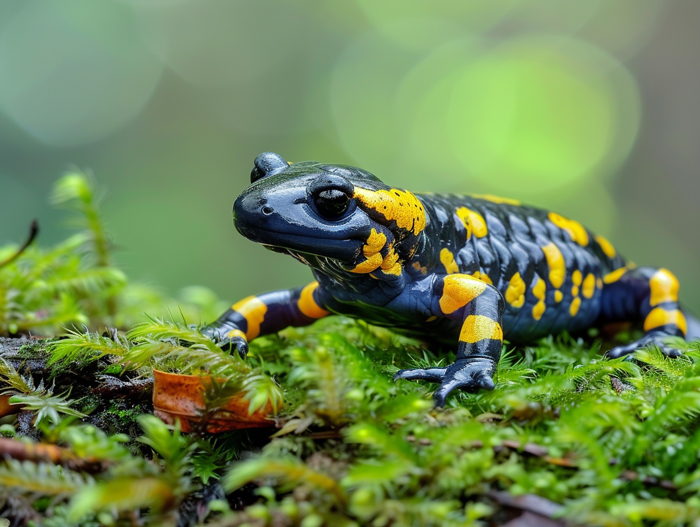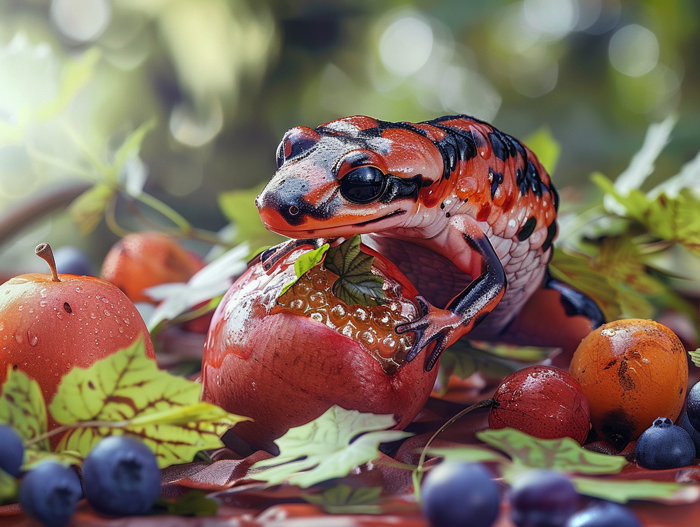Have you ever wondered if salamanders have magical powers? Well, they might not be able to cast spells, but they do have a fascinating ability: regrowing lost limbs. Yes, you read that right! Salamanders are known for their incredible regenerative powers, making them the envy of many amputees out there.
Imagine being able to regrow a lost arm or leg as effortlessly as a salamander does. It sounds like something out of a science fiction movie, but for these remarkable creatures, it’s just another day in the life. Scientists have been studying salamanders for years, trying to unlock the secrets behind their regenerative abilities. Could this hold the key to one day helping humans regrow lost limbs too? Let’s jump into the world of salamanders and explore the wonders of limb regeneration.
Key Takeaways
- Salamanders possess remarkable regenerative powers, capable of regrowing lost limbs, tails, jaws, and even parts of their heart and brain.
- The regeneration process in salamanders involves specialized cells called blastema, nerve guidance for proper limb function, genetic factors, and environmental influences.
- Different salamander species exhibit unique regenerative abilities, with species like Axolotl showing exceptional regrowth capabilities.
- Studying salamanders’ regenerative abilities offers insights into regenerative medicine for humans, potentially leading to innovative treatments for traumatic injuries and organ regeneration.
- Salamanders’ regenerative biology inspires advancements in bioengineering and tissue regeneration technologies, offering new possibilities for repairing damaged tissues in humans.
Overview of Salamanders Regrowing Limbs

Welcome to the intriguing world of salamanders and their remarkable ability to regrow lost limbs. Salamanders are amphibians known for their incredible regenerative powers, capable of regrowing not just limbs, but also tails, jaws, and even parts of their heart and brain.
- Regeneration Process: When a salamander loses a limb, specialized cells called blastema form at the site of the injury. These blastema cells have the unique ability to differentiate into various cell types needed to rebuild the lost limb.
- Nerve Guidance: Nerves play a crucial role in the regeneration process by providing guidance for the regrowing limb. Without proper nerve connections, the regenerated limb may not function correctly.
- Genetic Factors: Research suggests that genetic factors play a significant role in salamanders’ regenerative abilities. By studying these genetic mechanisms, scientists aim to unlock the secrets to regeneration that could potentially benefit human regenerative medicine.
- Environmental Influence: Factors such as temperature, nutrition, and environmental conditions can influence the regenerative capabilities of salamanders. Understanding how these factors impact regeneration could lead to new insights for regenerative medicine research.
Fascinating, isn’t it? The regenerative powers of salamanders continue to captivate scientists and researchers worldwide, offering hope for advancements in regenerative medicine that may someday benefit humans as well.
Understanding Regeneration in Salamanders

Cellular Mechanisms Involved in Limb Regeneration
- Blastema: Specialized cells that drive regrowth.
- Pluripotent: Ability to develop into various cell types for reconstruction.
- Epigenetic Changes: Triggered by injury, guiding cell differentiation.
- Nerve Guidance: Essential in proper limb restructuring.
- Genetic Variation: Influence on regenerative capacity.
- Environmental Conditions: Temperature, humidity affecting regeneration speed.
Investigate into the fascinating processes guiding salamanders’ incredible ability to regrow limbs and uncover the intricate balance of cellular mechanisms and external factors impacting successful regeneration.
Comparison of Regenerative Abilities Across Different Salamander Species

When examining the regenerative prowess of salamanders, it becomes evident that various salamander species exhibit unique capabilities in limb regrowth. Here’s a breakdown of the comparison across different salamander species:
Axolotl (Ambystoma mexicanum)
- Regenerative Ability: Exceptional regenerative capacity, capable of fully regrowing complex structures like limbs and even parts of vital organs.
- Regeneration Speed: Rapid regeneration process, with the ability to initiate limb regrowth within days after amputation.
Red-Spotted Newt (Notophthalmus viridescens)
- Regenerative Ability: Demonstrates remarkable regrowth, especially in limb regeneration.
- Regeneration Pattern: Regenerates limbs with distinct stages of cellular reorganization and differentiation.
Eastern Red-Backed Salamander (Plethodon cinereus)
- Regenerative Ability: Competent at regrowing limbs, tail, and other tissues.
- Regeneration Factors: Encompasses the interplay of various genetic and physiological factors in the regrowth process.
Fire salamander
- Regenerative Ability: Shows moderate regenerative capabilities, particularly in limb regeneration.
- Regeneration Potential: Exhibits the ability to rebuild functional structures post-amputation, albeit with variances in regrowth speed.
Overall, the comparison of regenerative abilities across these diverse salamander species highlights the nuanced variations in their regrowth potential and mechanisms. Understanding these distinctions offers valuable insights into the adaptability and resilience of these fascinating amphibians in the area of regenerative biology.
The Potential Applications for Human Medicine

When exploring the regenerative abilities of salamanders, it’s crucial to consider the potential implications for human medicine. The remarkable talent of these amphibians to regrow lost limbs opens up exciting possibilities for the advancement of medical treatments and technologies. Here’s a closer look at how studying salamanders could revolutionize the field of human medicine:
- Regenerative Medicine Insights: By dissecting the regrowth mechanisms of salamanders, scientists gain invaluable insights into how tissue regeneration occurs at a cellular level. Understanding these processes could lead to groundbreaking developments in regenerative medicine for humans.
- Treatment of Traumatic Injuries: Harnessing the regenerative capabilities of salamanders may pave the way for innovative treatments for individuals who have suffered traumatic injuries resulting in limb loss. Researchers are exploring ways to apply the knowledge gained from studying these amphibians to enhance regeneration in human tissues.
- Potential Alternatives to Organ Transplants: The ability of salamanders to regenerate complex structures like limbs raises the possibility of developing techniques to help organ regrowth in humans. This could potentially reduce the reliance on traditional organ transplants and offer new hope to patients in need.
- Bioengineering and Tissue Regeneration: Insights from salamander regenerative biology are driving advancements in bioengineering and tissue regeneration technologies. Through the mimicry of natural regrowth processes, scientists aim to create innovative solutions for repairing damaged tissues in humans.
Exploring the regenerative abilities of salamanders not only sheds light on the extraordinary capabilities of these animals but also holds significant promise for advancing medical treatments and shaping the future of regenerative medicine for human health.
Conclusion
Understanding salamanders’ regenerative abilities offers valuable insights into the potential advancements in human medicine. By delving into the mechanisms of limb regrowth in these fascinating creatures, scientists are paving the way for groundbreaking developments in regenerative medicine. This research not only sheds light on the remarkable regenerative capabilities of salamanders but also holds the key to transforming medical treatments for traumatic injuries and organ transplants. The future of regenerative medicine looks promising, with the potential to revolutionize healthcare through bioengineering and tissue regeneration technologies. Exploring the regenerative powers of salamanders opens new doors for innovative medical solutions that could shape the future of human health.

Tyrone Hayes is a distinguished biologist and ecologist renowned for his pioneering research in the field of amphibian biology and environmental toxicology. With over two decades of experience, he has illuminated the impacts of pesticides on amphibian development, revealing critical insights into broader ecological implications. Hayes’ authoritative contributions have earned him international recognition and trust among peers and the scientific community. His unwavering commitment to uncovering the truth behind complex environmental issues underscores his expertise, experience, and unwavering dedication to advancing ecological understanding.
